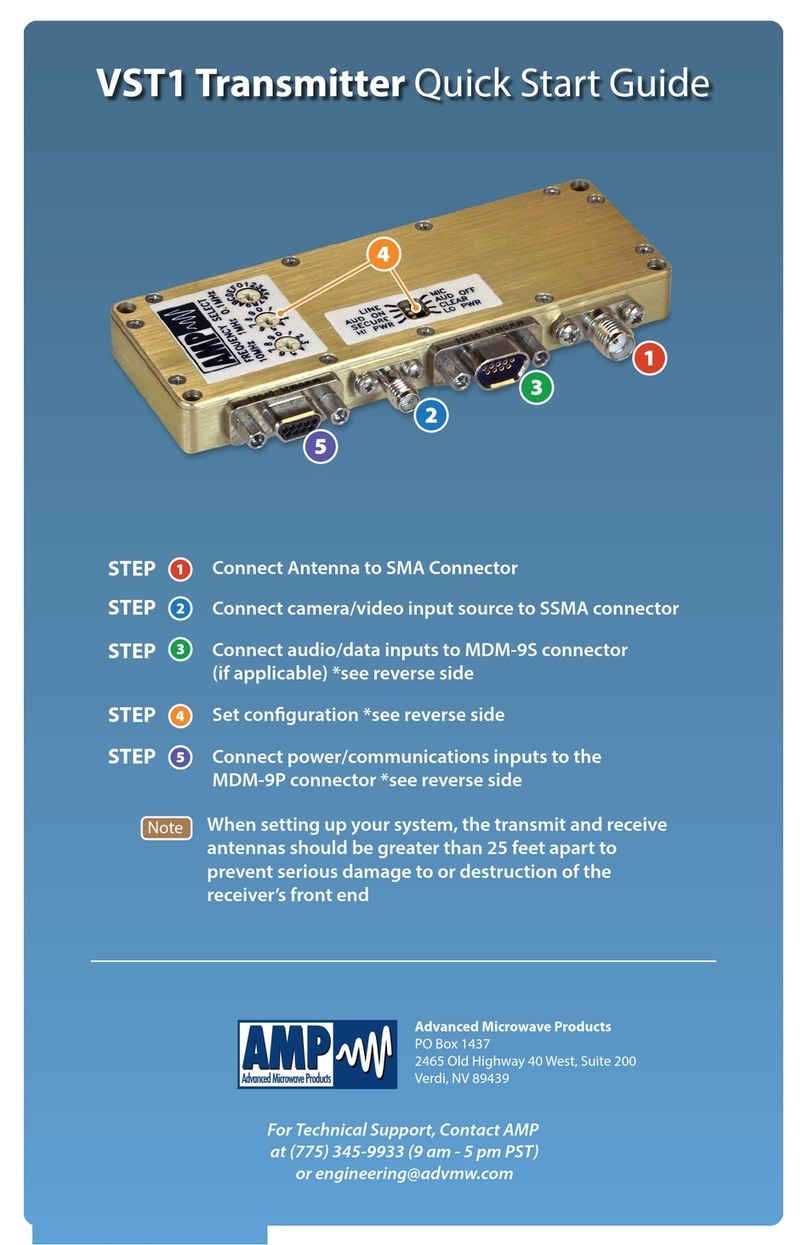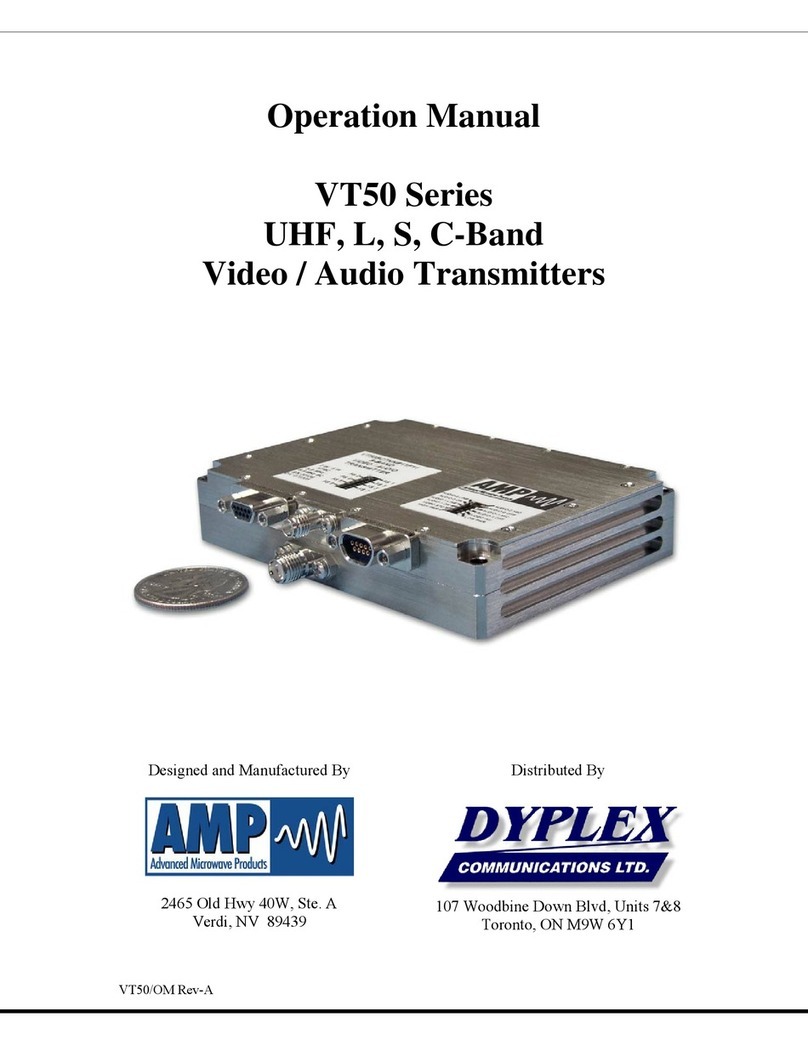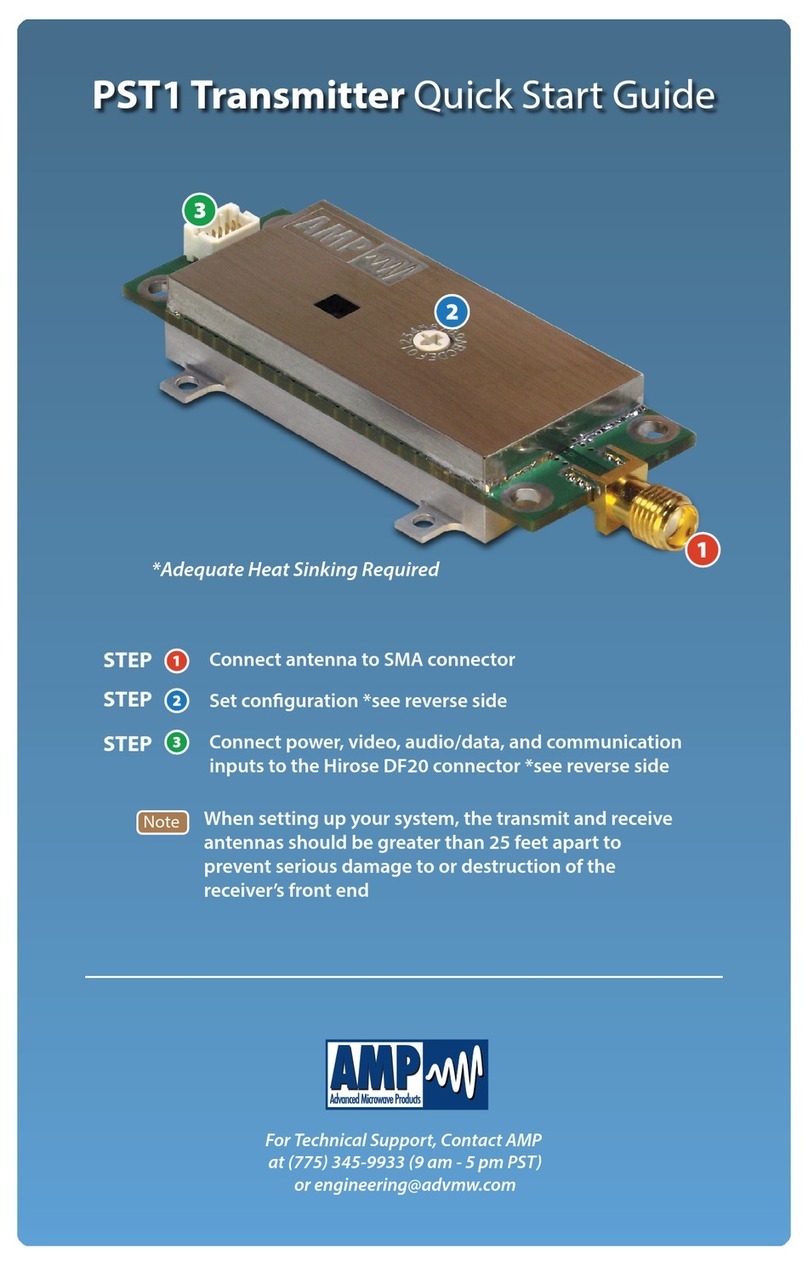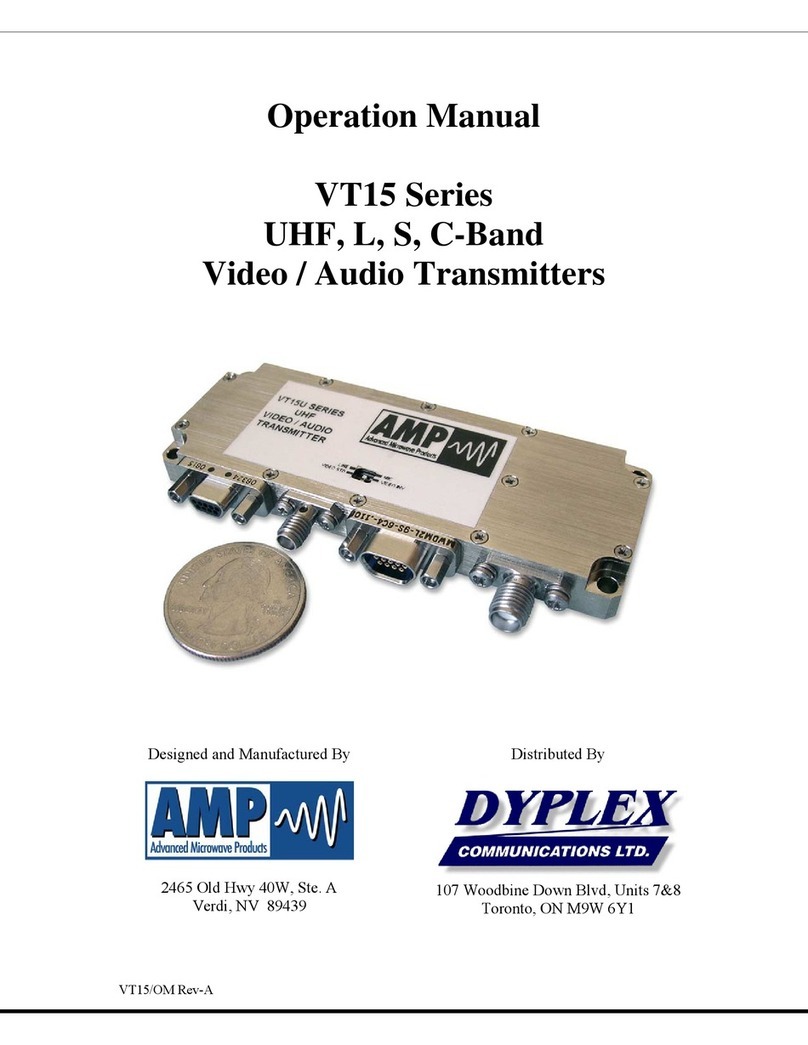AMN-VHT1-B 5
4. PREPARATION FOR USE
4.1. Unpacking
Carefully remove the product from the shipping container and make sure all listed furnished items are
included as noted in the respective section. Inspect all items for damage. If any item is omitted from the
shipment or appears damaged, contact AMP with detailed description of problem.
4.2. Transmitter Pre-Test
Although each unit is thoroughly tested at the factory for both functional and environmental performance,
a minimal amount of pre-testing should be done by the operator before placing the transmitter into
service. The transmitter, an appropriate receiver, transmit and receive antennas, a video camera, a video
monitor, proper cabling, and DC power supplies are the only components required to perform a functional
test of the transmitter. If testing audio or data, an audio source (microphone or line level) or data source
and a speaker or headphones (audio) or data monitor will also be required.
Verify DC power supplies are between +11 and +16 Vdc. With the DC Power Cable (PT02E-12-10P
connector) DISCONNECTED from the transmitter, connect DC power supply to DC Power Cable (Pin A =
positive DC input, Pin B = negative DC input (ground)). Do not connect DC Power Cable to transmitter
until all other connections are complete.
Connect the transmit antenna to transmitter RF output connector (SMA). Connect the Video to the
transmitter video input connector (BNC). Connect the Video Cable between the Video Adapter Cable and
video camera. If testing audio or data, connect the audio or data source to the Power/Audio/Data/Comms
Cable (PT02E-12-10P connector) and cable to the transmitter. Refer to Section 2.2 for a complete
transmitter wiring diagram.
Configure transmitter as instructed in Section 5. Connect DC Power Cable to transmitter (mates to
PT02E-12-10P connector on transmitter). Video should be observed on the monitor and audio heard
through the speaker / headphones (or data present) once the transmitter locks on frequency (requires
several seconds). If no video, data, or audio is present, refer to Section 6.2 for troubleshooting
instructions.
5. INSTALLATION AND OPERATING INSTRUCTIONS
Transmitter configuration is available via “Local”, “Preset”, or “Remote” modes. See the V Series ICD for
details on controlling your transmitter remotely or reprogramming its presets. Local configuration and
Presets can be set on the display on the transmitter.
5.1. Local Programming
The transmitter display is always active regardless of whether the unit is in “Local”, “Preset”, or “Remote”
mode. The unit responds to local button presses and remote commands in the same manor and updates
whatever parameter is being changed accordingly. When a transmitter is turned on, it will be in the last
mode it was on when it was last turned off.
To activate or change modes, press the button on the display and the CONFIG character will be
flashing. Use the buttons to scroll through the available modes. When the CONFIG character
displays the mode you want to configure, press the button to select it.




































